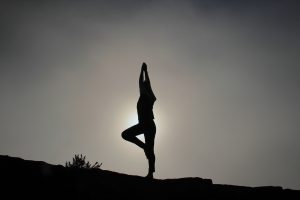
Yoga poses, which began in India, have turned into a fundamental component of Western culture, with around 80 million individuals rehearsing yoga alone in the US. It’s easy to see the reason why it keeps on drawing newbies in light of its availability, congeniality, and modifiability.
Yoga arrives in different structures. Due to the wide variety of styles that are available and the low practice requirements, yoga is suitable for beginners. Yoga offers physical and mental mending and learning experiences by blending breath, reflection, and development with actual stances. It really benefits for all intents and purposes everybody since it has so many laid-out well-being benefits.
Not sure where to start? This article will introduce you to the foundations.
What is Yoga
Yoga is a Sanskrit word that is interpreted as “burden” or “association.” The word “yoke” means to pull, tie, or connect something. Its motivation is to burden or join the body, insight, soul, and worldwide mindfulness. Yoga experts experience significant sensations of opportunity, quietness, and self-acknowledgment by blending their physical, mental, profound, and otherworldly characteristics.
Yoga is an ancient system of teaching students physical, mental, and spiritual practices. Breathing techniques, postures, relaxation, chanting, and other forms of meditation are all part of yoga practice. There are a few assortments of yoga, each with its own particular point and technique for accomplishing a condition of solidarity.
The Upanishads, a collection of yogic teachings written between 800 BC and 400 Promotion, may serve as its foundation. Albeit the expression “yoga” was first utilized in the Rigveda, the Katha Upanishad is where it got its ongoing significance. This old, deep writing was written between the fifth and third century BCE.
One of the most well-known works on the fundamentals of yoga, the Yoga Sutras, was written by Patanjali around 200 BCE. In this fundamental text, Sutra 1.2, the Buddha refers to yoga as chitta-vritti-nirodhah. This means, “Yoga is the suspension of the brain’s spinning variances.”
Easy Yoga Poses for Beginners and Their Benefits
Yoga has acquired notoriety across the world because of its thorough benefits, which incorporate better actual strength, adaptability, and mental prosperity. Fledglings ought to start with simple yoga places that permit them to slide into training. This post will go north of 10 fledgling amicable yoga positions, isolated into standing and sitting stances, as well as bit-by-bit headings to assist you with getting everything rolling on your yoga process.
Goal of Yoga
Yoga is a thoughtful act of self-revelation and freedom. It is a set of practices that aims to break free from the cycle of birth and death, recognize a detached witness consciousness, and control the mind. It teaches us to take an objective look at ourselves, to recognize what is true about us, and to let go of what no longer serves us. It helps us in becoming mindful of our viewpoints, sentiments, and convictions, as well as transforming them when they never again serve us. It gives us the tools we need to live more fully and make better decisions in life.
Yoga is a preparation that cleans and changes our bodies, minds, and spirits. It enables us to connect with our general surroundings and broadens our perspective. It in like manner extends our permission to internal resources that can assist with the improvement of care, affirmation, compassion, determination, appreciation, exoneration, lowliness, love, agreement, and satisfaction.
Easy Yoga Poses for Beginners and Their Benefits
Yoga is a respected practice with various physical and mental advantages. It is a great way for novices to start their excursion of self-revelation, care, and prosperity. On the off chance that you’re new to yoga, it’s basic to begin with straightforward postures to fabricate areas of strength for a. In this article, we will take a gander at ten straightforward yoga presents, including standing and sitting stances, as well as their bit-by-bit guidelines and advantages.
Standing Yoga Poses:
1. Mountain Pose (Tadasana)
Method:
Stand with your feet together, placing them solidly into the mat.
Draw in your center muscles and lengthen your spine.
Loosen up your arms by your sides.
Inhale profoundly and uniformly, tracking down solidness here.
Benefits: Tadasana further develops the act, reinforces the legs, and advances body mindfulness and equilibrium.
2. Tree Pose (Vrikshasana)
Method:
Begin in Tadasana and shift your weight to one foot.
Place the bottom of the contrary foot on your inward thigh or calf (keeping away from the knee joint).
Unite your hands in a request position at your heart.
Center your look around a proper highlight upgrade balance.
Benefits: Vrikshasana enhances balance, strengthens the leg muscles, and improves concentration and focus.
3. Warrior I (Virabhadrasana I)
Method:
Start in Mountain Posture and make a 45-degree point stride back with one foot.
Make a 90-degree twist in your front knee, adjusting it to your lower leg.
Raise the two arms before you, palms confronting one another.
Square your hips forward and sink further into the jump.
Benefits: Virabhadrasana builds strength in the legs, opens the chest, and energizes the body.
4. Warrior II (Virabhadrasana II)
Method:
From Hero I, open your hips and arms sideways, framing a T shape.
Guarantee your front impact point is lined up with the curve of the back foot.
Really look at your front hand’s fingertips.
Benefits: Virabhadrasana II fortifies the legs, further develops balance, and stretches the crotches and hips.
5. Triangle Pose (Trikonasana)
Method:
Stand with your feet wide apart, one turned outward and the other inward slightly.
Extend your arms parallel to the ground, out to the sides.
Hinge at the hip and extend your front hand towards the ground, while your other arm points upward.
Keep your legs straight and engage your core.
Benefits: Trikonasana stretches the hamstrings, opens the chest, and improves digestion.

6. Easy Pose (Sukhasana)
Method:
Sit with your legs crossed and your knees lower than your hips on the mat.
Place your hands on your knees, palms up or down.
Lengthen your spine and relax your shoulders.
Benefits: Sukhasana calms the mind, improves posture, and opens the hips.
7. Seated Forward Bend (Paschimottanasana)
Method:
Sit with your legs extended out in front of you.
As you bend forward from the hips, inhale, lengthen your spine, and exhale.
Reach for your toes or ankles with your hands, keeping your back straight.
Benefits: Paschimottanasana stretches the spine, hamstrings, and shoulders, and soothes the nervous system.
8. Butterfly Pose (Baddha Konasana)
Method:
Sit with your legs stretched, knees bent, and your feet soles together.
Sit tall and hold your feet with your hands
Gently flip your knees up and down like butterfly wings.
Benefits: Baddha Konasana opens the hips, improves flexibility, and stimulates abdominal organs.
9. Child’s Pose (Balasana)
Method:
Kneel on the mat with your big toes touching and knees apart.
Extend your arms forward and lower your body between your thighs.
Rest your forehead on the ground and relax.
Benefits: Balasana relieves stress, stretches the back, and promotes relaxation.
10. Corpse Pose (Savasana)
Method:
Lie on your back with your arms and legs outstretched.
By closing your eyes, you can give your body total relaxation.
Take a long, slow breath and focus on letting go of any tension in your body.
After a yoga practice, Savasana calms the mind, decreases pressure, and thinks about completely loosening up and fusing.
Integrating these fundamental yoga activities into your daily routine can be a great way to get your yoga practice moving. Remind yourself that yoga involves a variety of alternatives to traditional positions; In a similar way, it’s about making people care and friendly inside. As you practice these positions, revolve around your body and perceive the urgent force of yoga in your life. Namaste.







